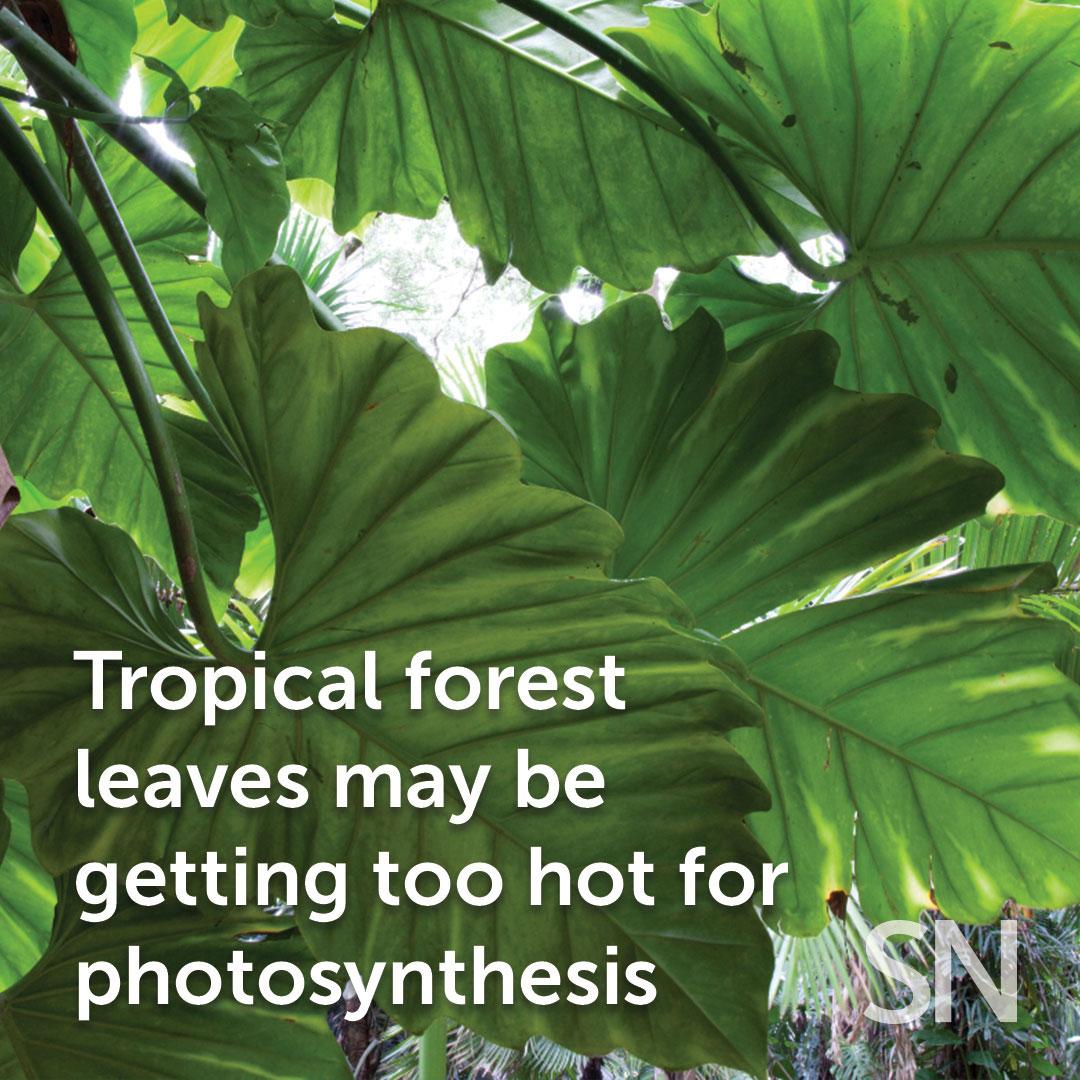Like people, leaves have their limits when it comes to heat. Back in 1864, scientists first reported that the leaves of some plants could survive up to 50° Celsius, only to perish beyond that threshold. When leaves get too hot, their photosynthetic machinery — proteins that convert light energy into sugars — breaks down. More than 150 years later in 2021, a study of 147 tropical plant species reported that the average temperature beyond which photosynthesis failed was 46.7° C. Researchers wanted to figure out how leaves in tropical forests are faring as the globe warms. Using data from a thermal sensor aboard the International Space Station, the scientists captured vegetation temperatures on Earth’s surface in 70-square-meter pixels. That’s about the area that two large tropical trees could fill. The team compared the data with measurements from devices on the planet’s surface to refine their view. The analysis revealed a mosaic of temperatures in forest canopies, including some especially hot leaves. In the upper canopy, roughly 1 in every 10,000 leaves experiences temperatures at least once annually that may be too high for photosynthesis. That might seem a paltry sum, but a photosynthetic breakdown could harm entire forests if climate change is not halted, the scientists warn.
(: Buena Vista Images/Photodisc/Getty Images Plus)
#climate #forests #tropics #trees #globalwarming #science
(: Buena Vista Images/Photodisc/Getty Images Plus)
#climate #forests #tropics #trees #globalwarming #science
Like people, leaves have their limits when it comes to heat. Back in 1864, scientists first reported that the leaves of some plants could survive up to 50° Celsius, only to perish beyond that threshold. When leaves get too hot, their photosynthetic machinery — proteins that convert light energy into sugars — breaks down. More than 150 years later in 2021, a study of 147 tropical plant species reported that the average temperature beyond which photosynthesis failed was 46.7° C. Researchers wanted to figure out how leaves in tropical forests are faring as the globe warms. Using data from a thermal sensor aboard the International Space Station, the scientists captured vegetation temperatures on Earth’s surface in 70-square-meter pixels. That’s about the area that two large tropical trees could fill. The team compared the data with measurements from devices on the planet’s surface to refine their view. The analysis revealed a mosaic of temperatures in forest canopies, including some especially hot leaves. In the upper canopy, roughly 1 in every 10,000 leaves experiences temperatures at least once annually that may be too high for photosynthesis. That might seem a paltry sum, but a photosynthetic breakdown could harm entire forests if climate change is not halted, the scientists warn.
(📸: Buena Vista Images/Photodisc/Getty Images Plus)
#climate #forests #tropics #trees #globalwarming #science
·1092 Views

